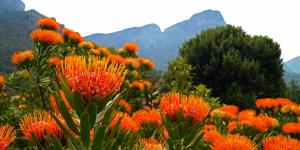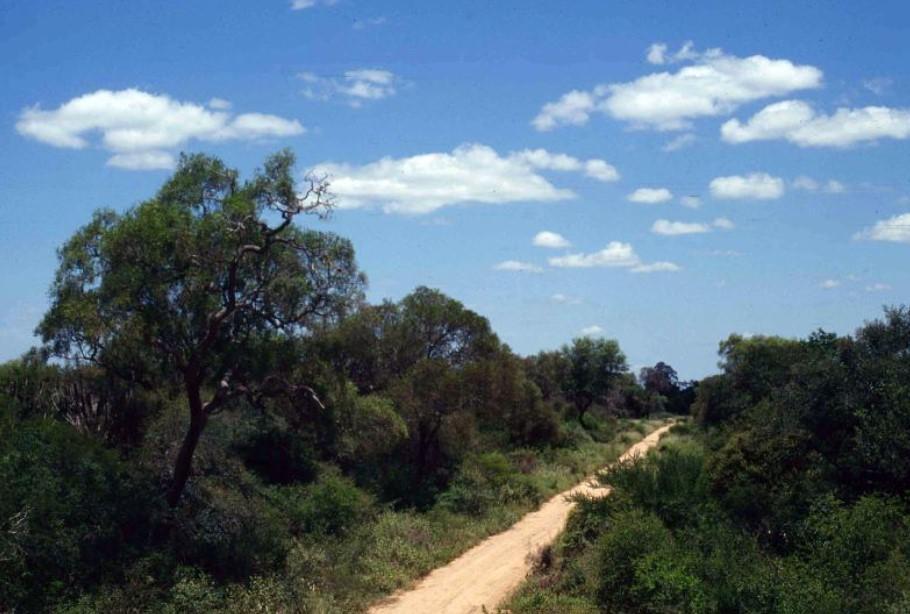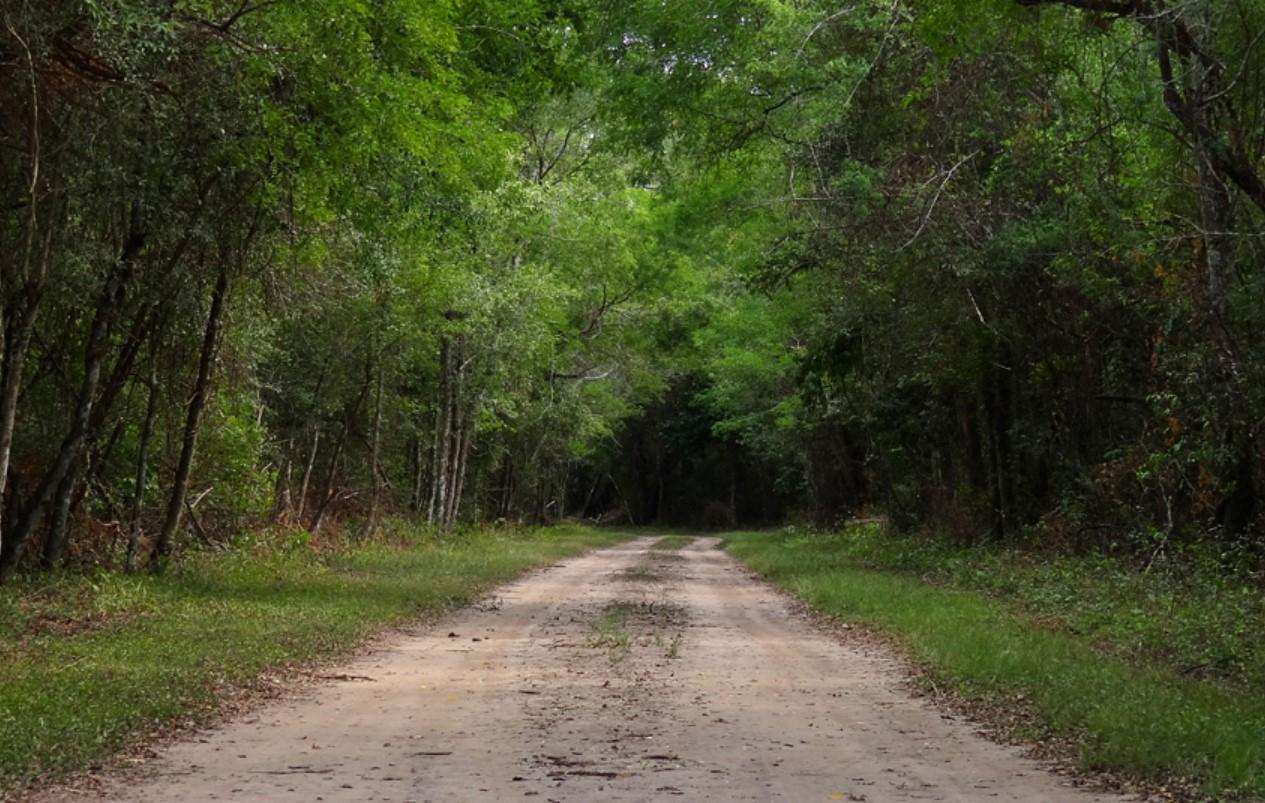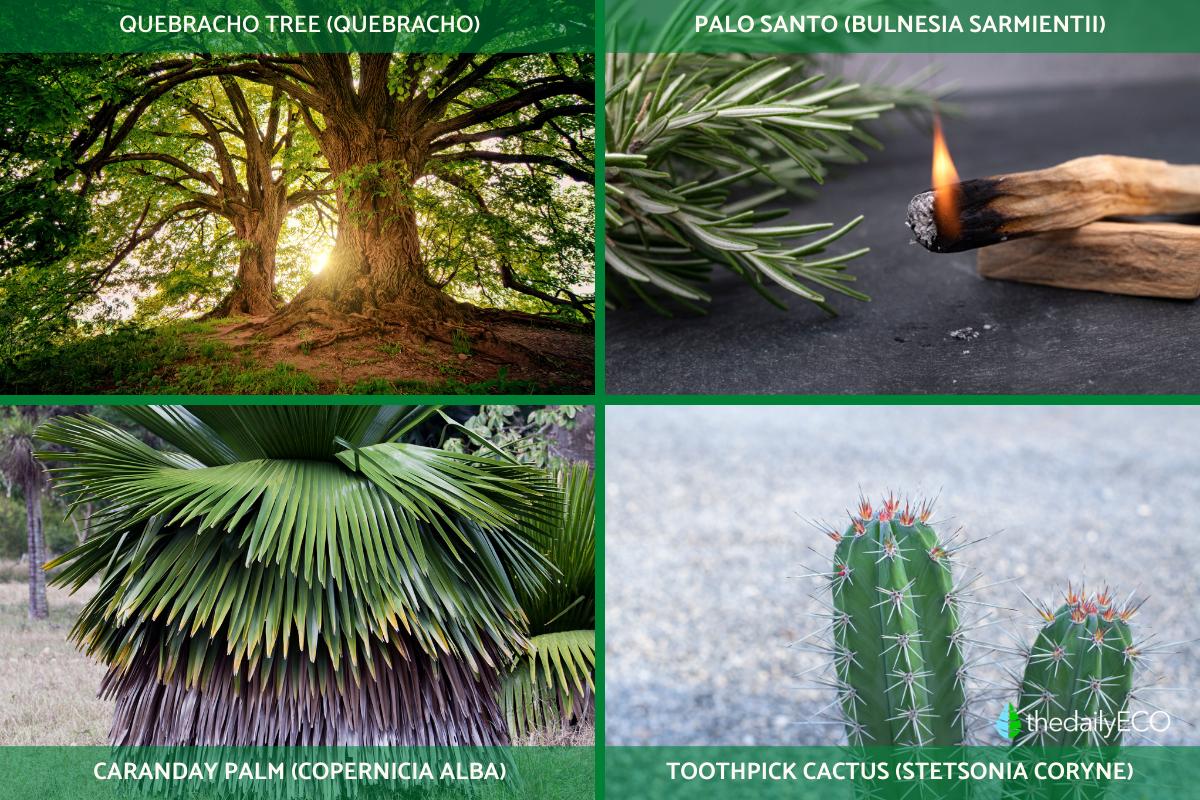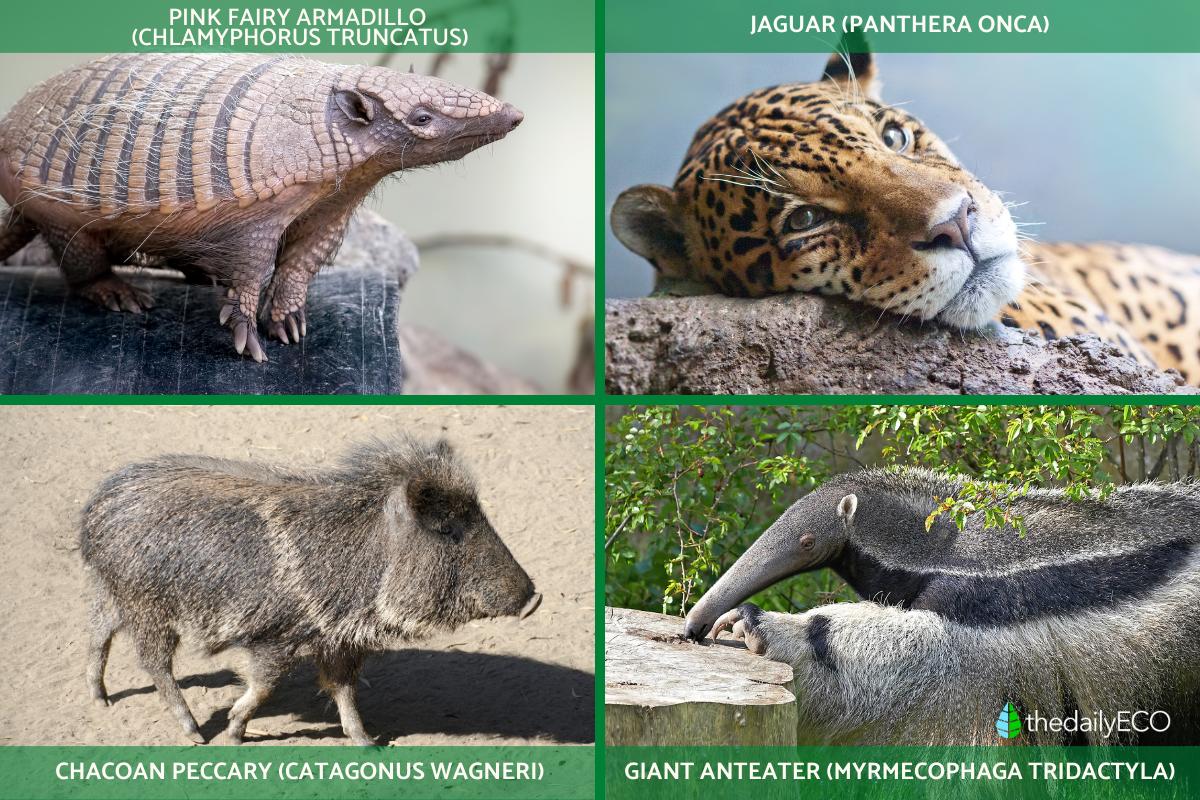What Is the Gran Chaco?


The Gran Chaco forest is the second-largest forested region in the Americas, second only to the Amazon rainforest. Located in South America, the Gran Chaco spans southern Bolivia, western Paraguay, northern Argentina, and a small part of Brazil. This massive ecosystem covers over 647,000 square miles, more than twice the size of California.
In this article by thedailyECO, we’ll explore what makes the Gran Chaco forest unique, where it’s located, what animals live there, and why conservation efforts are more urgent than ever.
Where is the Gran Chaco forest located?
The Gran Chaco's territory is distributed among several countries: approximately 62% is in Argentina, 25% in Paraguay, 12% in Bolivia, and 1% in Brazil. This vast region covers about 647,500 square miles (1,000,000 square kilometers), making it roughly twice the size of Texas.
The Gran Chaco stretches from the eastern foothills of the Andes Mountains to the Paraguay and Paraná rivers. It's situated west of the Brazilian Pantanal wetlands and north of the Argentine Pampas grasslands. While largely unknown to many Americans compared to the Amazon rainforest, the Gran Chaco represents one of the most important ecological regions in South America.

Key characteristics of the Gran Chaco forest
What makes the Gran Chaco special also explains its amazing biodiversity and the unique environmental hurdles it faces. Different from your average rainforest, the Chaco is a patchwork of various environments formed by its geography, climate, and soil.
The Gran Chaco is primarily an alluvial sedimentary plain formed over millions of years as rivers carried sediment from the Andes Mountains. With very few rock outcrops, the landscape is flat, with a gentle slope of just 0.004 degrees toward the east. This topography creates critical differences in moisture and drainage that significantly impact the region's ecosystems.
Experts divide the Gran Chaco into two main ecological subregions:
- Dry Chaco (Chaco Seco) in the west: located in the rain shadow of the Andes, this region receives significantly less rainfall. The drier conditions create a more arid landscape characterized by drought-resistant vegetation and sparse tree cover. Rivers crossing this sedimentary plain create occasional oases of moisture.
- Humid Chaco (Chaco Húmedo) in the east: closer to the Paraguay and Paraná rivers, this region receives more rainfall and has better water retention. It features gentle slopes that form elevated banks around seasonally flood-prone areas, creating a patchwork of wetlands and forests.
This east-west moisture gradient is the primary factor distinguishing these subregions and explains their different plant and animal communities.
Climate:
The Gran Chaco has a warm subtropical climate. However, rainfall differences within the region create the distinct subregions:
- Dry Chaco: receives between 500-700 mm (19-27 inches) of annual rainfall.
- Humid Chaco: receives between 750-1300 mm (29-51 inches) of annual rainfall.
The region experiences extreme temperatures, with very hot summers and occasional frosts in winter. Strong winds called "pamperos" bring thunderstorms and occasionally exceed 60 miles per hour.
Soil:
The soil in the Gran Chaco forest generally contains high levels of sand and clay with low percentages of organic matter. Once the forest is cleared, these soils become prone to erosion.
Flora of the Chaco forest
Chaco plant life is a strong example of adaptation to tough environments. Around 3,400 species inhabit this region, showcasing evolution's response to high temperatures, periodic flooding, extended dry spells, and poor soil.
Different vegetation zones create a mix of ecosystems, including dry thorn forests and seasonal wetlands. For instance, in the dry western Chaco, cacti like the toothpick cactus (Stetsonia coryne) and other succulent plants create microhabitats that allow other species to survive. In the humid eastern Chaco, palm groves, often featuring species such as caranday palm (Copernicia alba), serve as green islands during seasonal flooding.
Species like palo santo (Bulnesia sarmientii) yield valuable aromatic oils used in perfumery and traditional medicine.
The quebracho trees are the kings of the Gran Chaco forest. Their name literally means "axe-breaker" in Spanish, referring to their incredibly dense, hard wood that can dull or break cutting tools. These trees have developed several key adaptations:
- Extensive root systems that can reach groundwater during prolonged droughts.
- Many Chaco tree species store water in their trunks or roots.
- Most Chaco trees have small, tough leaves that minimize water loss through evaporation. Some species shed their leaves entirely during extremely dry periods.
- Many species protect themselves with thorns, some growing up to a foot long, to deter browsing animals in this resource-scarce environment.
The quebracho trees produce some of the world's hardest wood and have been economically vital for railway ties, tannin extraction, and construction. The tannin industry from these trees has been a mainstay of the Chaco economy for over a century.
The special adaptation of these plants to the Chaco's challenging conditions makes them uniquely valuable, but also difficult to restore once lost. Many species grow extremely slowly, with quebracho trees taking up to 100 years to reach maturity. This underscores the urgency of conservation efforts in the region.

Fauna of the Chaco forest
The Gran Chaco is another exceptional example of evolutionary adaptation, with about 500 bird, 150 mammal, and 220 reptile and amphibian species. These animals have developed strategies for survival in a region with extreme temperature changes, seasonal water shortages, and diverse habitats.
The Gran Chaco is an armadillo biodiversity hotspot, with Argentina's Chaco alone hosting ten species. These mammals have evolved bony plates that provide protection from predators and reduce water loss in the dry climate.
- The pink fairy armadillo (Chlamyphorus truncatus): found nowhere else on Earth, has adapted to a completely subterranean lifestyle with reduced eyes, tiny ears, and powerful digging claws.
- The giant armadillo (Priodontes maximus): found in the drier western regions, uses its massive front claws to excavate insect nests and create burrows that provide shelter for dozens of other species.
The jaguar (Panthera onca), the region's apex predator, displays specific adaptations to Chaco conditions. With a stockier build than its Amazonian relatives, Chaco jaguars have developed efficient hunting techniques for the region's prey species and remarkable camouflage that blends perfectly with the dappled light of the forest. Their ability to take down large prey conserves energy between hunts, which is critical in this resource-limited environment.
Many Chaco mammals have evolved specialized kidneys that concentrate urine to minimize water loss. Species like the Chacoan peccary (Catagonus wagneri), once thought extinct and rediscovered in 1975, can derive much of their moisture needs directly from their food, including cacti, which most other animals cannot digest.
The region's birds showcase impressive behavioral adaptations to seasonal changes. Many species synchronize breeding with the brief rainy season when resources are abundant, while others undertake strategic migrations between the humid and dry regions as conditions change.
Species like the giant armadillo and giant anteater (Myrmecophaga tridactyla) physically modify habitats, creating shelter that benefits countless other species. Their burrows and feeding excavations create microhabitats that increase biodiversity and help cycle nutrients.
Fruit-eating animals like the tapir (Tapirus terrestris) and various bird species spread seeds throughout the landscape, helping maintain plant diversity and forest regeneration. A single tapir can disperse thousands of seeds daily across several miles.

Environmental problems of the Chaco forest
Like most of the world's ecosystems, the Argentine Chaco forest faces numerous environmental problems that lead to ecosystem destruction and species loss.
The Gran Chaco is one of the most deforested areas on the planet, with approximately 20% of the forest converted to farmland or grazing land between 1985-2013.
The main environmental issues affecting the Gran Chaco forest include:
- Deforestation: the expansion of agricultural and livestock frontiers (particularly soy cultivation and cattle ranching), commercial forest exploitation, and urbanization are the primary reasons for the high deforestation rates in the Chaco forest. Every month, an area over 133 square miles (345 square kilometers) is lost.
- Wildfires: fire is another environmental issue affecting the Chaco forest. While most fires are intentional, the Chaco region is not exempt from global warming, and higher recorded temperatures increase the probability of wildfires and extreme weather events.
- Invasive species: another environmental problem in the Chaco forest biome is the long list of invasive species that compete with local biodiversity and, in many cases, end up displacing native species.
Fascinated by the Gran Chaco's unique ecosystems? Dive deeper into how forests function as living networks in our other article.
Conservation of the Gran Chaco forest
The conservation of the Chaco forest is urgent and essential. Human settlements in the area are being severely affected by ecosystem degradation, and many native plant and animal species are endangered.
There are several protected areas dedicated to conserving the different environments in the Chaco region, including:
- Kaa-Iya del Gran Chaco National Park (Bolivia)
- Defensores del Chaco National Park (Bolivia)
- Tinfunqué National Park (Paraguay)
- Copo National Park (Argentina)
- El Impenetrable National Park (Argentina)
In these areas, multiple species reintroduction and ecosystem restoration projects are being developed.
Despite these efforts, enforcement challenges remain. In 2007, Argentina passed the National Forest Law that zones native forests into three different categories of conservation protection, but enforcement and compliance issues persist.
There are still insufficient regulations that effectively limit deforestation of Chaco forest remnants, nor adequate controls that penalize those engaged in illegal hunting and trafficking of species or those who intentionally cause fires.
Why the Gran Chaco forest matters
Protecting the Gran Chaco forest in South America is crucial not only for preserving one of the continent's most diverse ecosystems but also for its critical role as a carbon sink. Recent research found that the carbon stored here is 19 times greater than previously estimated, making it one of the largest carbon sinks on the planet.
The Gran Chaco is vital for:
- Supporting indigenous communities (more than 600) who have lived there for generations.
- Maintaining biodiversity.
- Preventing soil erosion.
- Mitigating climate change through carbon sequestration.
- Preserving water cycles essential for agriculture in the region.
The Gran Chaco is just one example of why our natural world needs protection. Discover the broader picture of how human actions impact our planet in our related article.
If you want to read similar articles to What Is the Gran Chaco?, we recommend you visit our Ecosystems category.
- The Nature Conservancy (TNC), Foundation for Sustainable Development of Chaco (DeSdel Chaco), Argentine Wildlife Foundation (FVSA), and Wildlife Conservation Society Bolivia (WCS). 2005. Ecoregional Assessment of the Great American Chaco / Gran Chaco Americano Ecoregional Assessment . (Buenos Aires). Argentine Wildlife Foundation: https://www.vidasilvestre.org.ar/?2980/evaluacin-ecorregional-del-gran-chaco-americano

